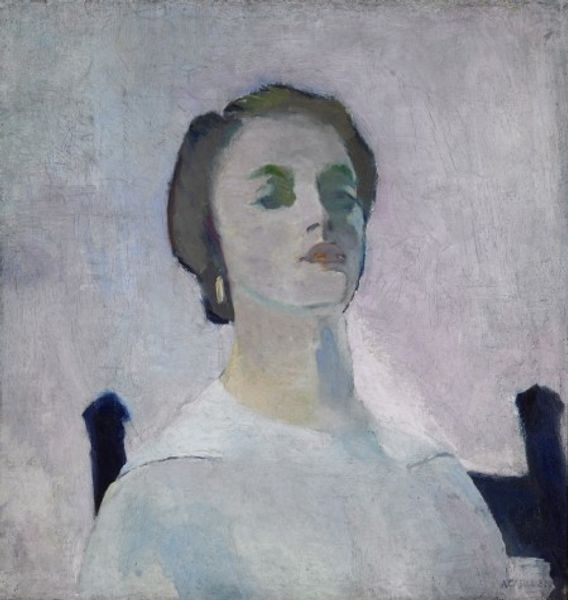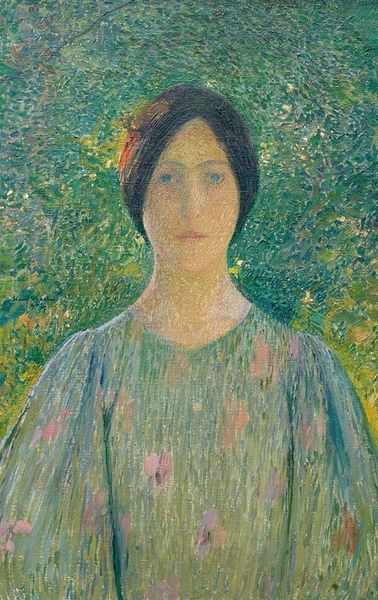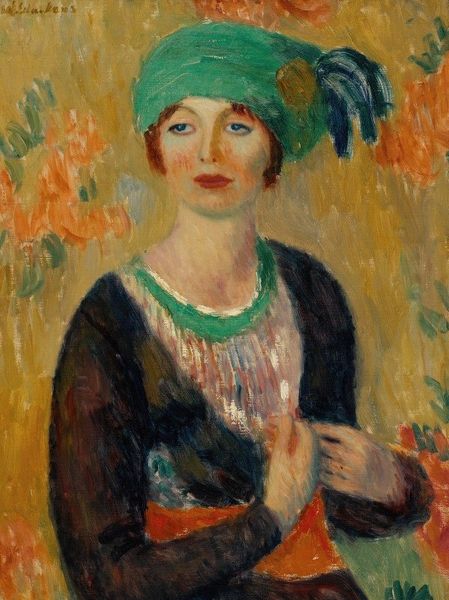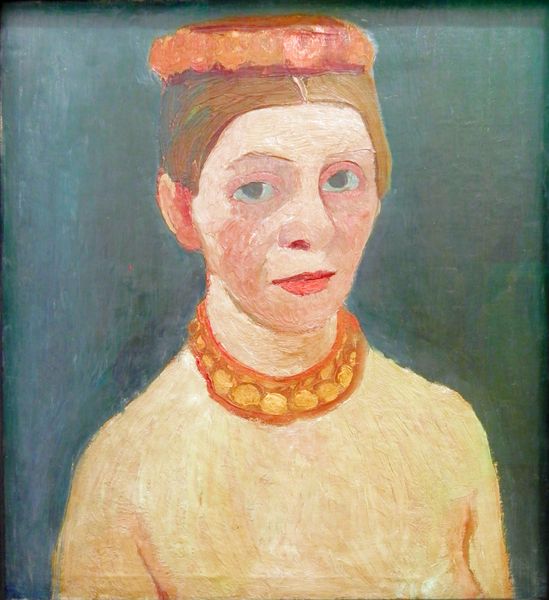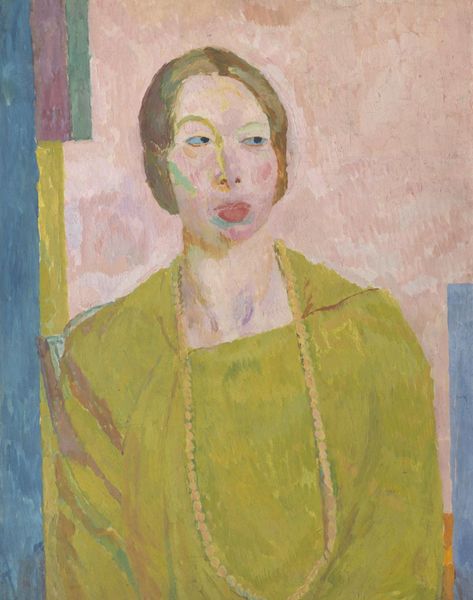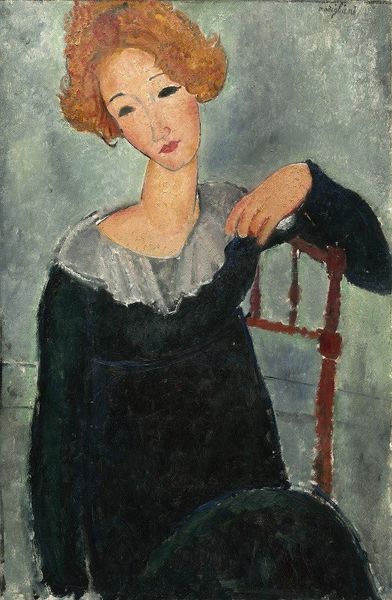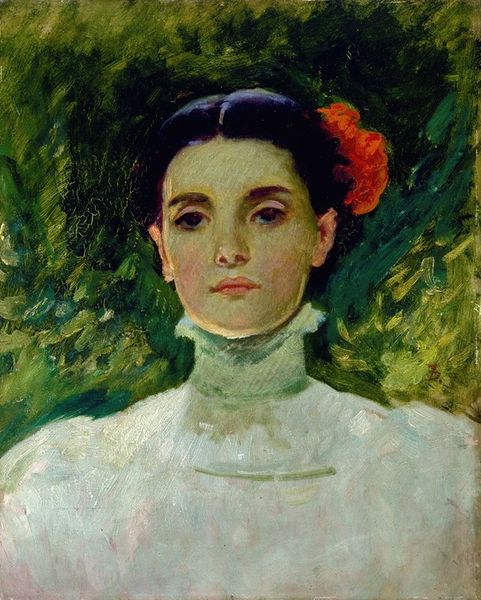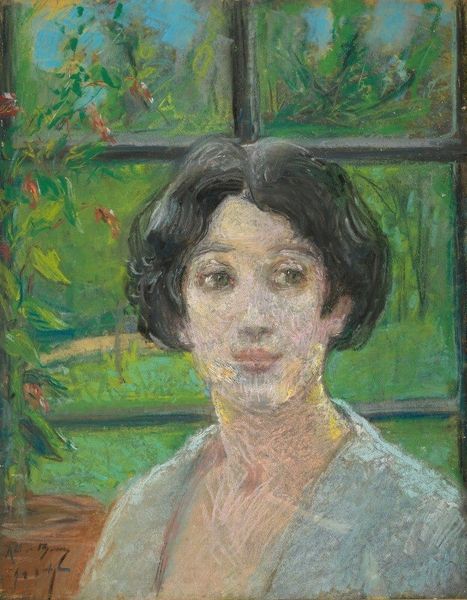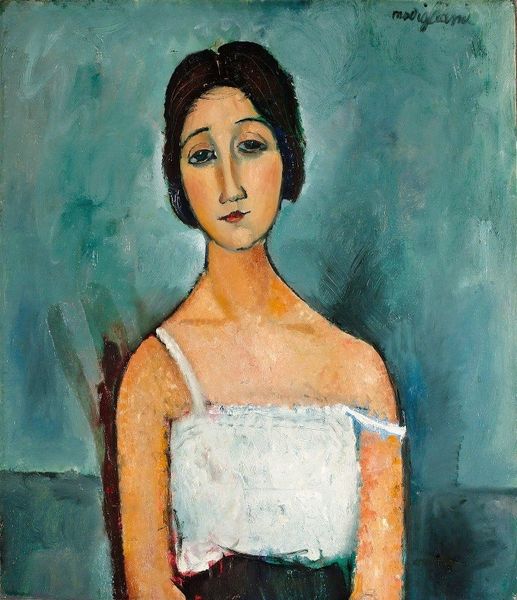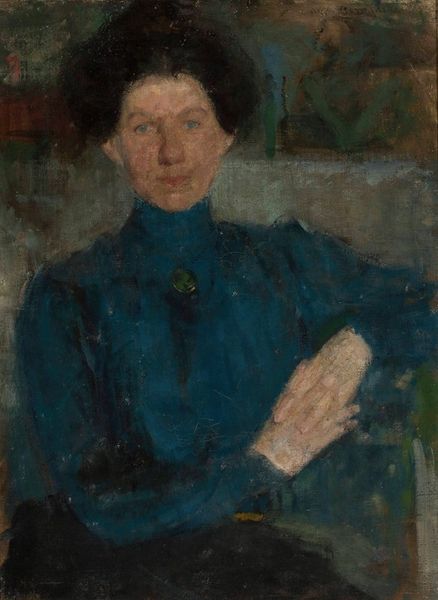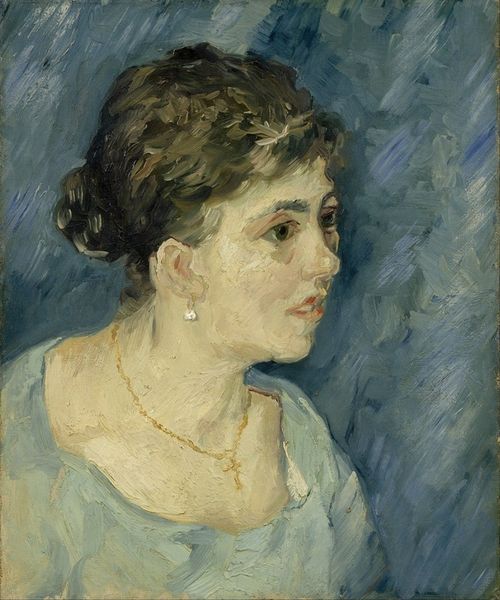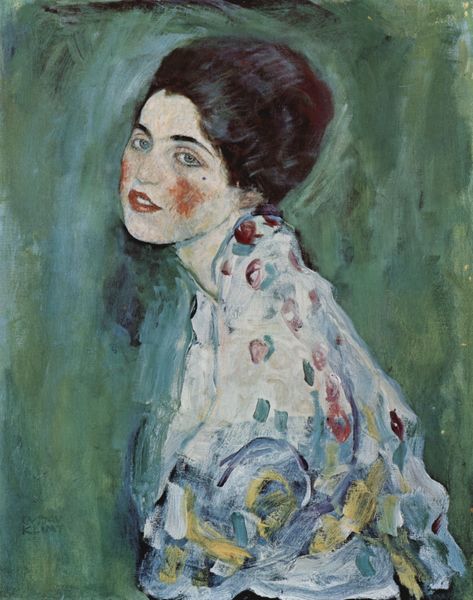
Self-portrait in front of a green background with a blue iris 1900 - 1907
0:00
0:00
Copyright: Public Domain: Artvee
Editor: Here we have Paula Modersohn-Becker’s “Self-portrait in front of a green background with a blue iris," painted sometime between 1900 and 1907, using oil paint. There's something very direct and honest about it, especially her gaze. What strikes you when you look at this painting? Curator: The irises scattered behind her are visually arresting, aren't they? Flowers are, of course, potent symbols, representing not just beauty, but also the ephemeral nature of life, growth, and renewal. They frame her, almost like a halo. It invites the question: How do the irises shape or influence our understanding of her self-image? Editor: I hadn't considered the irises as a kind of halo! That really shifts my perspective. Do you think the green background adds to that effect? Curator: Definitely. Green is often associated with nature, growth, and life but, considering her untimely death, it could also hint at unrealized potential, a life cut short. Think of the tradition of "green sickness," or chlorosis, a disease associated with young women. The artist's intentional color choices enrich the piece, no? Editor: Absolutely, I see it now. And the necklace – does that symbolise anything? Curator: Necklaces are traditionally symbols of status or binding ties. However, within the context of a self-portrait, especially considering the frankness of her expression, one might also see it as a representation of self-possession and awareness, but it does give me the question; is she presenting a status? Editor: I see what you mean. The contrast makes you think. Thanks, I really appreciate your insight into the symbolism in the work. Curator: My pleasure! Thinking about the cultural and historical context always unlocks deeper meaning within an artwork, wouldn’t you agree?
Comments
No comments
Be the first to comment and join the conversation on the ultimate creative platform.
